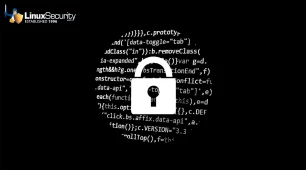-----BEGIN PGP SIGNED MESSAGE-----
Hash: SHA1
______________________________________________________________________________
SUSE Security Announcement
Package: kernel
Announcement ID: SUSE-SA:2006:006
Date: Thu, 09 Feb 2006 16:00:00 +0000
Affected Products: SUSE LINUX 10.0
Vulnerability Type: remote denial of service
Severity (1-10): 9
SUSE Default Package: yes
Cross-References: CVE-2005-3356, CVE-2005-3358, CVE-2005-3623
CVE-2005-3808, CVE-2005-4605, CVE-2005-4635
CVE-2006-0454
Content of This Advisory:
1) Security Vulnerability Resolved:
various kernel security problems
Problem Description
2) Solution or Work-Around
3) Special Instructions and Notes
4) Package Location and Checksums
5) Pending Vulnerabilities, Solutions, and Work-Arounds:
See SUSE Security Summary Report.
6) Authenticity Verification and Additional Information
______________________________________________________________________________
1) Problem Description and Brief Discussion
The Linux kernel on SUSE Linux 10.0 has been updated to
fix following security problems:
- CVE-2006-0454: An extra dst release when ip_options_echo failed
was fixed.
This problem could be triggered by remote attackers and can
potentially crash the machine. This is possible even with
SuSEfirewall2 enabled.
This affects only SUSE Linux 10.0, all other SUSE distributions
are not affected.
- CVE-2005-3356: A double decrement in mq_open system call could lead
to local users crashing the machine.
- CVE-2005-3358: A 0 argument passed to the set_mempolicy() system
call could lead to a local user crashing the machine.
- CVE-2005-4605: Kernel memory could be leaked to user space through a
problem with seek() in /proc files .
- CVE-2005-3623: Remote users could set ACLs even on read-only
exported NFS Filesystems and so circumvent access control.
- CVE-2005-3808: A 32 bit integer overflow on 64bit mmap calls
could be used by local users to hang the machine.
- CVE-2005-4635: Add sanity checks for headers and payload of netlink
messages, which could be used by local attackers to crash the
machine.
Also various non-security bugs were fixed:
- Fix up patch for cpufreq drivers that do not initialize
current freq.
- Handle BIOS cpufreq changes gracefully.
- Updates to inotify handling.
- Various XEN Updates.
- Catches processor declarations with same ACPI id (P4HT)
- PowerPC: g5 thermal overtemp bug on fluid cooled systems.
- Fixed buffered ACPI events on a lot ASUS and some other machines.
- Fix fs/exec.c:788 (de_thread()) BUG_ON (OSDL 5170).
2) Solution or Work-Around
There is no known workaround, please install the updated packages.
3) Special Instructions and Notes
SPECIAL INSTALLATION INSTRUCTIONS
================================ The following paragraphs guide you through the installation
process in a step-by-step fashion. The character sequence "****"
marks the beginning of a new paragraph. In some cases, the steps
outlined in a particular paragraph may or may not be applicable
to your situation. Therefore, make sure that you read through
all of the steps below before attempting any of these
procedures. All of the commands that need to be executed must be
run as the superuser 'root'. Each step relies on the steps
before it to complete successfully.
Newer SUSE Linux versions do all this automatically when running
the YaST Online Update.
**** Step 1: Determine the needed kernel type.
Use the following command to determine which kind of kernel is
installed on your system:
rpm -qf --qf '%{name}\n' /boot/vmlinuz
**** Step 2: Download the packages for your system.
Download the kernel RPM package for your distribution with the
name indicated by Step 1. Starting from SUSE LINUX 9.2, kernel
modules that are not free were moved to a separate package with
the suffix '-nongpl' in its name. Download that package as well
if you rely on hardware that requires non-free drivers, such as
some ISDN adapters. The list of all kernel RPM packages is
appended below.
The kernel-source package does not contain a binary kernel in
bootable form. Instead, it contains the sources that correspond
with the binary kernel RPM packages. This package is required to
build third party add-on modules.
**** Step 3: Verify authenticity of the packages.
Verify the authenticity of the kernel RPM package using the
methods as listed in Section 6 of this SUSE Security
Announcement.
**** Step 4: Installing your kernel rpm package.
Install the rpm package that you have downloaded in Step 2 with
the command
rpm -Uhv
replacing with the filename of the RPM package
downloaded.
Warning: After performing this step, your system may not boot
unless the following steps have been followed
completely.
**** Step 5: Configuring and creating the initrd.
The initrd is a RAM disk that is loaded into the memory of your
system together with the kernel boot image by the boot loader.
The kernel uses the content of this RAM disk to execute commands
that must be run before the kernel can mount its root file
system. The initrd is typically used to load hard disk
controller drivers and file system modules. The variable
INITRD_MODULES in /etc/sysconfig/kernel determines which kernel
modules are loaded in the initrd.
After a new kernel rpm has been installed, the initrd must be
recreated to include the updated kernel modules. Usually this
happens automatically when installing the kernel rpm. If
creating the initrd fails for some reason, manually run the
command
/sbin/mkinitrd
**** Step 6: Update the boot loader, if necessary.
Depending on your software configuration, you either have the
LILO or GRUB boot loader installed and initialized on your
system. Use the command
grep LOADER_TYPE /etc/sysconfig/bootloader
to find out which boot loader is configured.
The GRUB boot loader does not require any further action after a
new kernel has been installed. You may proceed to the next step
if you are using GRUB.
If you use the LILO boot loader, lilo must be run to
reinitialize the boot sector of the hard disk. Usually this
happens automatically when installing the kernel RPM. In case
this step fails, run the command
/sbin/lilo
Warning: An improperly installed boot loader will render your
system unbootable.
**** Step 7: Reboot.
If all of the steps above have been successfully completed on
your system, the new kernel including the kernel modules and the
initrd are ready to boot. The system needs to be rebooted for
the changes to be active. Make sure that all steps have been
completed then reboot using the command
/sbin/shutdown -r now
Your system will now shut down and restart with the new kernel.
4) Package Location and Checksums
The preferred method for installing security updates is to use the YaST
Online Update (YOU) tool. YOU detects which updates are required and
automatically performs the necessary steps to verify and install them.
Alternatively, download the update packages for your distribution manually
and verify their integrity by the methods listed in Section 6 of this
announcement. Then install the packages using the command
rpm -Fhv
to apply the update, replacing with the filename of the
downloaded RPM package.
x86 Platform:
SUSE LINUX 10.0:
617123d586215e94e373797650689b7f
0cbb96d083eb5c5cb6f14896b156d3d6
9da719c36eb4119165d5cd70bfb98703
e84cf4f754e2dbad45d32f22764ac363
96556ee27a4a34ad2757fe0605f56e0a
6bcc5556183a30d5be7164229f1a9b2a
78883d88c7cca8f55676c6ad8fae8f74
566deccc17d66d38037829b04cd90bf6
98dd96111ed5932e29f17bdea8785ad4
37d53ae4b23984e6c2c1eccf2cab1418
9486e2bbba0809d01469eb8ce2862e45
916db787417eb6714f4ef29e2b4fc215
c9f178ee29025e37fad02fc97f54a960
b7bd6a96c6f4e484c71121d928ccd88c
a45eca7e51d5013a33c911ea1a4cfee2
da838d086ab74ae26217fdefd48536ae
803b0ce83f4a3a08988b3af39f187158
9224d203e3466d1bf9a44ccfa0811471
a9b0794189169f88275922da3e3e8566
3c39e8fadf994ba48c77f429d6d57b89
08559ccb01107e018ac9b1bdf8b6be65
Power PC Platform:
SUSE LINUX 10.0:
9809772427eb306647e818d806a77e89
e180170929a1ea8d3f98331bcfb30c9b
87a70ccab5ba54792dee4aa10c793842
b87c03b2d486fd03c3fac0b3d2a6a226
7dade40bb01bd88a8b0fe59d1305f5c8
x86-64 Platform:
SUSE LINUX 10.0:
1b257b185e8eedfc3d8fbded87ad78d7
602f86133787c0ecc8eec89b23d54315
1a60423b90616a8cbe9f709f3af24788
95a1d602ec636d83429e326c5d72a6ac
72998ee6616db4d71eb5f6830b02775d
8dbeccfea33a188e645c49d18b489ec8
f8b7244ffdfce6cd10a63793bfff91c1
3a1b868760ccfcd9e58a99d0cc2e6e10
bf63af95f1460384576fe544497a69d9
b40992546fe02ba8c1b575ea0d219459
89ebeb3a359c3bea923579d557ddd799
596a4325239ea8b18dd13a2f32a23fd9
a0dec51273e8b67313cb7001efa4e555
88ec4608838d3c0175412d4f9a3a722b
c4d1a2fb18cc12cc670eaecbcc52e51e
Sources:
SUSE LINUX 10.0:
318b6e58e9618c58b45b442402f02d8d
a8106394b8179741f4abe6c5033b825b
15357679ff39d7d172915286cf366a02
4819d48418dd04d54a6a2cc95ae743dd
07716c45346938286197c12459139f1d
1f0626d1a7a4f9512a68787369110323
0d54d3a5531ca860327a42d026d6a5ed
de47591367758860be95265cf81a514b
807f7d1ffde7604cf90198237b3db382
859c7778b1138f4a6a650ca855d81d09
131b8f17f1aa4ea060bcc1d3a6148756
75b98cae0e6d1c682e70309bb975060b
______________________________________________________________________________
5) Pending Vulnerabilities, Solutions, and Work-Arounds:
See SUSE Security Summary Report.
______________________________________________________________________________
6) Authenticity Verification and Additional Information
- Announcement authenticity verification:
SUSE security announcements are published via mailing lists and on Web
sites. The authenticity and integrity of a SUSE security announcement is
guaranteed by a cryptographic signature in each announcement. All SUSE
security announcements are published with a valid signature.
To verify the signature of the announcement, save it as text into a file
and run the command
gpg --verify
replacing with the name of the file where you saved the
announcement. The output for a valid signature looks like:
gpg: Signature made using RSA key ID 3D25D3D9
gpg: Good signature from "SuSE Security Team "
where is replaced by the date the document was signed.
If the security team's key is not contained in your key ring, you can
import it from the first installation CD. To import the key, use the
command
gpg --import gpg-pubkey-3d25d3d9-36e12d04.asc
- Package authenticity verification:
SUSE update packages are available on many mirror FTP servers all over the
world. While this service is considered valuable and important to the free
and open source software community, the authenticity and the integrity of
a package needs to be verified to ensure that it has not been tampered
with.
There are two verification methods that can be used independently from
each other to prove the authenticity of a downloaded file or RPM package:
1) Using the internal gpg signatures of the rpm package
2) MD5 checksums as provided in this announcement
1) The internal rpm package signatures provide an easy way to verify the
authenticity of an RPM package. Use the command
rpm -v --checksig
to verify the signature of the package, replacing with the
filename of the RPM package downloaded. The package is unmodified if it
contains a valid signature from build@suse.de with the key ID 9C800ACA.
This key is automatically imported into the RPM database (on
RPMv4-based distributions) and the gpg key ring of 'root' during
installation. You can also find it on the first installation CD and at
the end of this announcement.
2) If you need an alternative means of verification, use the md5sum
command to verify the authenticity of the packages. Execute the command
md5sum
after you downloaded the file from a SUSE FTP server or its mirrors.
Then compare the resulting md5sum with the one that is listed in the
SUSE security announcement. Because the announcement containing the
checksums is cryptographically signed (by security@suse.de), the
checksums show proof of the authenticity of the package if the
signature of the announcement is valid. Note that the md5 sums
published in the SUSE Security Announcements are valid for the
respective packages only. Newer versions of these packages cannot be
verified.
- SUSE runs two security mailing lists to which any interested party may
subscribe:
suse-security@suse.com
- General Linux and SUSE security discussion.
All SUSE security announcements are sent to this list.
To subscribe, send an e-mail to
.
suse-security-announce@suse.com
- SUSE's announce-only mailing list.
Only SUSE's security announcements are sent to this list.
To subscribe, send an e-mail to
.
For general information or the frequently asked questions (FAQ),
send mail to or
.
==================================================================== SUSE's security contact is or .
The public key is listed below.
====================================================================





















